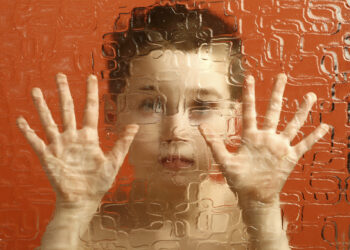Self-harm in children
What is Self-Harm?
Self-harm is when someone injures or hurts themselves on purpose, for example by cutting or by taking too much medication at one time (overdose).
How common is self-harm?
It affects up to 1 in 5 young people.
10% of 15-16 year olds self-harm
Why do people self-harm?
Young people self-harm for lots of different reasons:
- Sometimes people self-harm because feel overwhelmed or helpless, and self-harming can help them feel more in control.
- Sometimes people self-harm as a way of getting relief from difficult feelings, especially if they experience a sense of these feelings building up inside.
- Sometime people self-harm as a way of punishing themselves if they feel ashamed, or if they blame themselves for how they feel or for something that has happened.
- Sometimes people self-harm so they feel something, as they mostly feel nothing or numb or empty.
- Sometimes people self-harm in response to voices only they can hear, or other unusual experiences
- Sometimes the act of self-harm is carried out with the intention of ending life, as the person feels things are so unbearable there is no option apart from suicide.
Often an episode of self-harm is triggered by something stressful such as an argument with a family member or the ending of a relationship.
Young people are more likely to self-harm if they have had negative life experiences such as abuse, neglect or rejection either currently or in the past.
Young people may be more likely to self-harm if they are using drugs and alcohol, either while they are intoxicated or as the effects of the drugs or alcohol wear off.
Young people who are depressed, or have an eating disorder, or who have other serious mental health disorders are more likely to self-harm
Self-harm is also associated with personality difficulties or disorder.
Self-injurious behaviour
Self-injurious behaviour is similar to self-harm in that it may result in personal injury to the young person, however the reasons behind it are often different to self-harm.
It occurs in people with intellectual disabilities (also known as learning disabilities) and usually reflects distress and difficulties in communicating the distress.
The distress may be caused by environmental factors such as the actions of others (which may be abusive), changes in routine or the environment, sensory experiences (sound, temperature, light) or internal factors such as communication difficulties, pain or discomfort.
The self-injurious behaviour may be described as ‘challenging’ by others and is often a young person’s method of communicating the distress that they are experiencing.
Assessment requires the establishing of a function of the behaviour. So, understanding why it is happening. Treatment would seek to address the causes of the behaviour to reduce the likelihood of it occurring eg reducing triggers such as pain and discomfort and improving communication. Also establishing how to keep the person safe from their behaviour is essential.
What help is there for people who self-harm?
Immediate:
The first priority when someone has self-harmed is to look after their physical health and ensure that they are safe. If someone has taken an overdose of medication or a harmful substance they will need to be assessed in A+E, since, depending on the substance they may need tests and in some cases treatment to prevent further harm. If someone has injured themselves, for example by cutting or burning, the injuries may require assessment and treatment at A+E or a Minor Injuries Unit.
Next the young person will have an assessment of their mental health and risk – this will be carried out as soon as possible after the self-harm by mental health professionals who are experienced in working with young people. The assessment may be carried out by a specialist Self Harm team, the Crisis team or by members of the local Child and Adolescent Mental Health (CAMH) team. The assessment will help the professionals work out how to help the young person. The assessment will usually involve parents/ carers as well as the young person, thought the young person should be seen by themselves for at least part of the assessment.
Following the assessment, a care plan will be developed with the young person, and their parents/ carers. In most cases, the young person will go home after the assessment so it is important they are helped to think about helpful coping strategies, distraction techniques and a safety plan of how to get help in the future. It is also important the young person and their family are aware of who they will see for follow-up and when this appointment will be.
Rarely, the young person will be admitted to psychiatric hospital following the self-harm assessment, if they have a severe underlying mental health disorder and they are at high risk of further serious self-harm.
Longer term:
The young person will be offered specific therapeutic work aimed at reducing self-harm – this may be as individual sessions or as part of a group.
If the young person has an underlying mental health disorder such as depression, it is important this is treated effectively and appropriately.
Parents/ carers should be offered information and support from the mental health professionals involved in the care of the young person – in some cases this may include family sessions, or more formal family therapy.
What happens to young people who self-harm?
Research has shown self-harm in adolescents is a risk marker for future mental health, self-harm, and substance use problems in early adulthood, regardless of suicidal intent. Self-cutting as a method of self-harm in children and adolescents conveys greater risk of future suicide (and repetition of self-harm) than self-poisoning. However most adolescents who self-harm do not continue to self-harm into adulthood.



